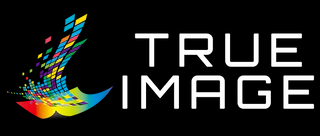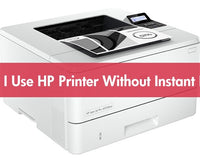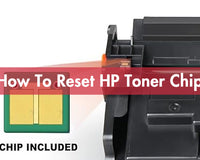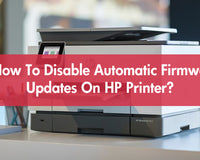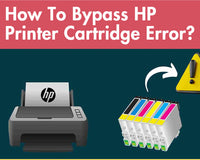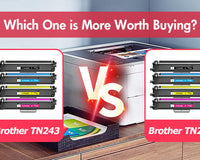Welcome to the colorful universe of clothing customization! Today, we're going to explore the fascinating world of printing on clothes, where creativity meets technology. Get ready to learn all about two popular methods that are changing the way we wear our art: DTF (Direct-to-Fabric) and DTG (Direct-to-Garment) printing.
But which one is right for you? Is it DTF, with its ability to print on a variety of fabrics and its stunning color vibrancy? Or is it DTG, known for its soft feel and the way it seamlessly blends the design with the fabric? Following True Image to uncover the secrets behind these two printing methods and make an informed choice for your next custom clothing project.
Blog Contents:
- Introduction: DTF Printing (Direct-to-Fabric)
- Introduction: DTG Printing (Direct-to-Garment)
- What Are The Differences Between DTF and DTG?
- How To Make The Right Choice?
Introduction: DTF Printing (Direct-to-Fabric)
One of the most innovative techniques in this realm is DTF printing (Direct-to-Fabric). This method has revolutionized the way we think about printing on textiles, offering a level of detail and color vibrancy that was once unattainable.
1. What Does DTF Printing Mean?
What is DTF printing? It is a digital printing approach that enables the direct application of full-color images onto fabrics. It stands out from traditional screen print methods by using an inkjet printer to apply the ink directly onto a PET film. This film, coated with adhesive powder, is then heat-pressed onto the fabric, ensuring the ink adheres perfectly. DTF transfers are known for their eco-friendly nature and ability to produce high-quality prints without the need for screens.
2. How Does DTF Printing Work?
- Design Creation: Start by creating a high-resolution digital design using graphic design software.
- Fabric Preparation: Ensure the fabric is clean and wrinkle-free to prepare for the printing process.
- Printing Designs: Send the design to a DTF printer, which prints the image onto a PET film.
- Adhesive Application: Apply adhesive powder over the printed ink to facilitate bonding during the transfer process.
- Drying the Ink: Dry the ink and adhesive powder to set the design on the PET film.
- Cutting the Design: Precisely cut out the design from the PET film.
- Heat Press: Place the cut design on the fabric and use a heat press to apply heat and pressure, transferring the ink from the film to the fabric.
- Peeling Off: Carefully peel off the PET film to reveal the printed design on the fabric.
After printing, the fabric should undergo a quality inspection to check for any defects. With these steps complete, the work is ready, showcasing a detailed and vibrant design that's directly printed onto the fabric.
Introduction: DTG Printing (Direct-to-Garment)
Shifting gears, let's explore another game-changing technology in the world of garment printing: DTG (Direct-to-Garment) printing. This method has taken the industry by storm, offering a new level of flexibility and quality for printing on garments.
1. What Does DTG Printing Mean?
DTG printing is another digital printing technique that allows for the direct application of ink onto garments, such as t-shirts and hoodies. It bypasses the need for screens or films, making it an ideal solution for print-on-demand services and designs on t-shirts with no minimum order requirements.
2. How Does DTG Printing Work?
- Design Creation: Like DTF printing, the process begins with a digital design created in high quality, ready for printing.
- Garment Preparation: Prepare a new garment, then load it onto the printer. It's crucial that the garment is flat and secure to prevent any movement during the printing process.
- Pre-treatment: Apply the pre-treatment solution to the garment to help the ink adhere properly.
- Direct Printing: Use a DTG printer to print the design directly onto the garment with water-based inks.
- Drying the Ink: Use a dryer to dry the ink on the garment and prevent smudging.
- Curing the Ink: Place the printed garment in a heat press or curing unit to heat the ink, ensuring the design is durable and long-lasting.
Same as the DTF printing, we should check the printed garment quickly for any defects. To further enhance the print's texture, it may undergo additional treatments such as steaming. Once these steps are completed, the garment is prepared for use.
What Are the Differences Between DTF and DTG?
Each printing method offers distinct advantages and differences that can significantly impact your business operations and end-product quality. Understanding those nuances is important to creating an knowledgeable choice that aligns together along with your needs.
1. Printing Process
- DTF Printing: This technology involves printing the design onto a transfer film or paper, which is then heat-pressed onto the printed material. The transfer process ensures that the ink adheres firmly to the fabric.
- DTG Printing: DTG printers spray ink directly onto the fabric, eliminating the need for a transfer medium. This direct-to-fabric approach allows for precise color control and minimal material waste.
2. Material Compatibility
- DTF Printing: Highly versatile, DTF can be applied to a wide array of fabrics, including cotton, polyester, nylon, denim, and more. It's particularly suitable for fabrics that are difficult to print on directly.
- DTG Printing: While DTG also works well on various fabrics, it excels on high-cotton content materials. Pre-treatment may be required for darker fabrics to achieve optimal color vibrancy.
3. Print Quality and Durability
- DTF Printing: Offers bright colors, sharp images, and good resistance to washing and wear. The transfer film provides an additional layer of protection, enhancing durability.
- DTG Printing: Produces high-quality prints with excellent color saturation and detail. However, the durability of DTG prints can vary depending on the fabric type and post-processing steps.
4. Cost and Efficiency
- DTF Printing: This can be cost-effective for large-scale productions due to its efficient transfer process and lower material waste.
- DTG Printing: Initial investment in DTG printers is typically higher, but they offer flexibility for short-run and one-off orders. However, DTG may not be as efficient for large volumes as DTF.
How To Make The Right Choice?
Making the right choice between Direct-to-Film printing and Direct-to-Garment printing, just like when you pick HP toner cartridges for your HP printer, involves considering several factors that are specific to your printing needs.
1. Production Volume
If you frequently handle large-scale orders, DTF may be more suitable due to its efficiency in transferring designs onto multiple garments simultaneously. However, for smaller batches or one-off prints, DTG offers greater flexibility.
2. Fabric Compatibility
Evaluate the types of fabrics you typically work with. DTF excels in printing on a wide range of materials, including polyester and nylon, while DTG is particularly effective on cotton-rich fabrics.
3. Print Quality and Durability
Both technologies produce high-quality prints, but DTF might offer slightly better durability due to the transfer film layer. However, DTG's direct printing method ensures excellent color saturation and detail.
4. Cost and Efficiency
Consider the cost-benefit analysis. DTF can be more cost-effective for large productions due to reduced material waste, while DTG's versatility in handling small orders may justify its higher initial investment.
5. Turnaround Time
If fast turnaround times are crucial, DTG might be the better option as it eliminates the need for a separate transfer step. DTF printing can be faster for single-color designs or when a high volume of the same design is being produced. DTG printing might be quicker for full-color prints with complex designs.
